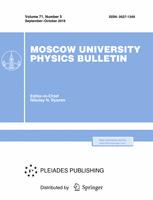The article discusses a computational procedure for obtaining all possible solutions to the Schrodinger equation by statistical testing or the Monte Carlo method. Clusters of water, namely hexamer, dodecahedra, and tetradecamer, act as a demonstration quantum system illustrating this procedure. Various solutions of the Schrodinger equation are derived from the computational algorithm proposed by the author earlier, based on the intersection of finite-difference, Monte Carlo approaches, the virial theorem, as well as methods tested on water clusters for spatial information of the scattering centers of particle nuclei and electron scattering centers of an arbitrary quantum system. A variety of information schemes are considered, among them are specially highlighted: single-particle, two-, three-, etc. up to the scheme with maximum partiality. Within the framework of any of the information schemes, the dissociation energy of the quantum system under consideration is consistent, on the one hand, and the positioning of the scattering centers of particle nuclei and electrons, on the other hand. The method of solving the Schrodinger equation proposed earlier by the author by the Monte Carlo method acts as a means of selecting configurations acceptable as solutions. As a result, it turned out to be possible to construct an algorithm for generating an unlimited number of different spatial structures of scattering clouds of particle nuclei and electrons at a given dissociation energy of a quantum system. The computational procedure proposed in this paper allows for a natural generalization for the case of describing an arbitrary quantum system whose elemental composition is known. The procedure is computationally efficient, because it allows parallelization of calculations.
$^1$Lomonosog Moscow Univercity



